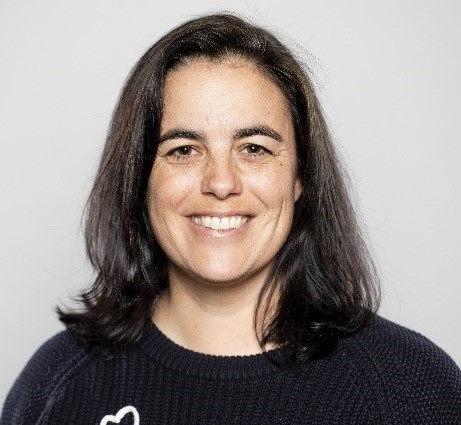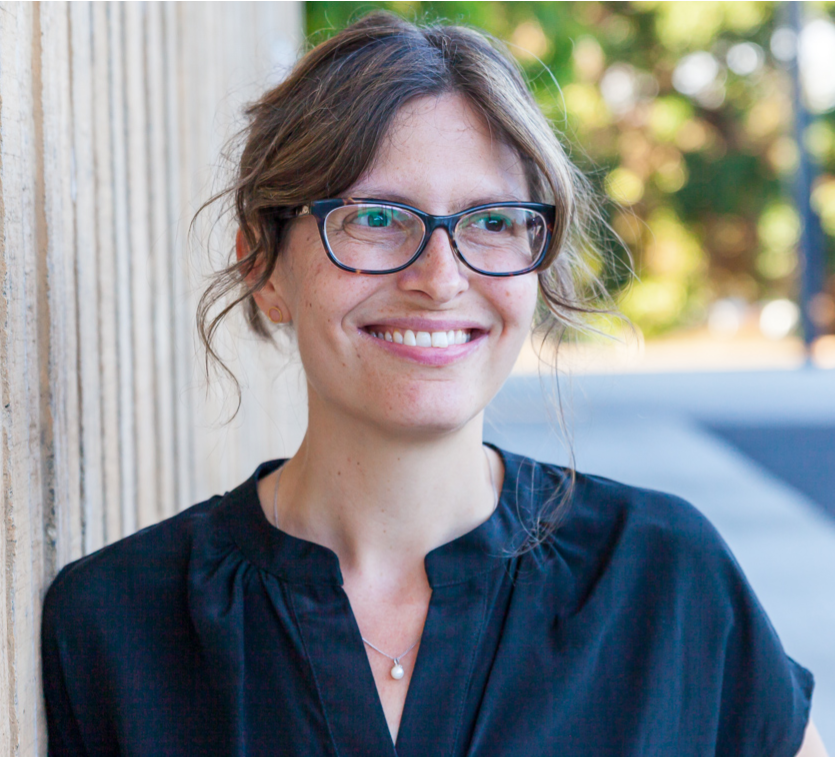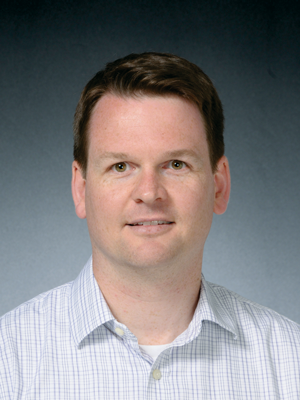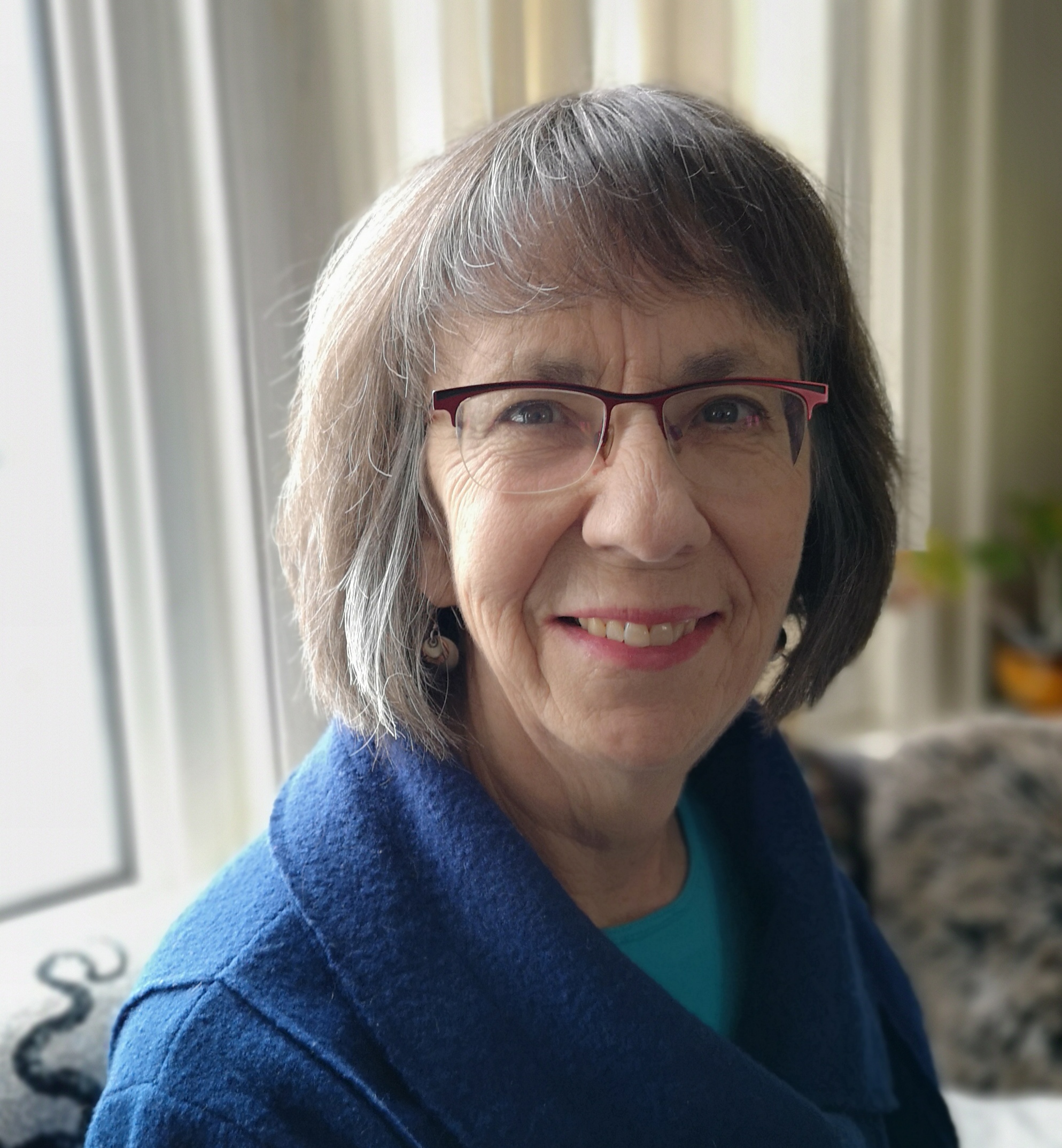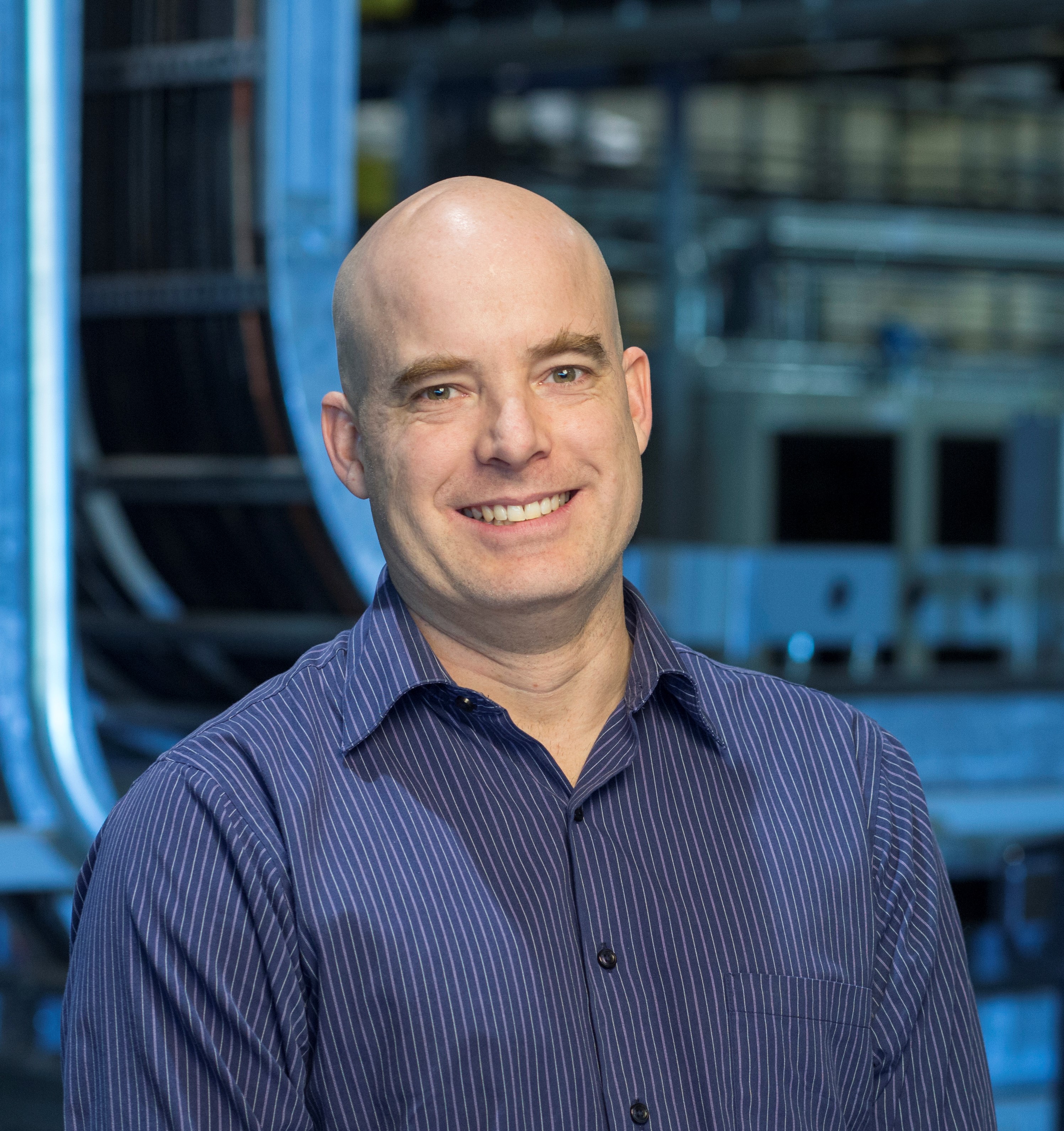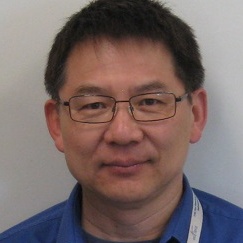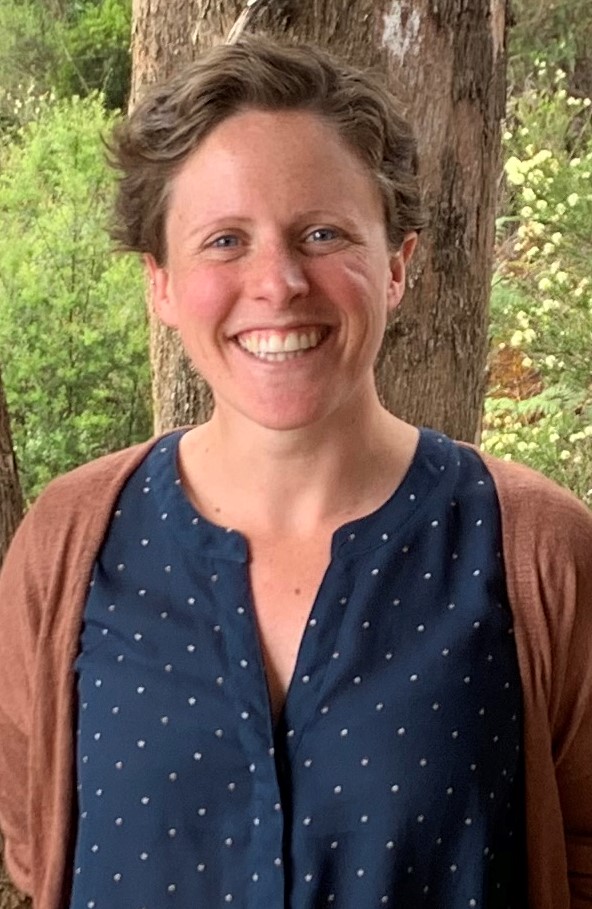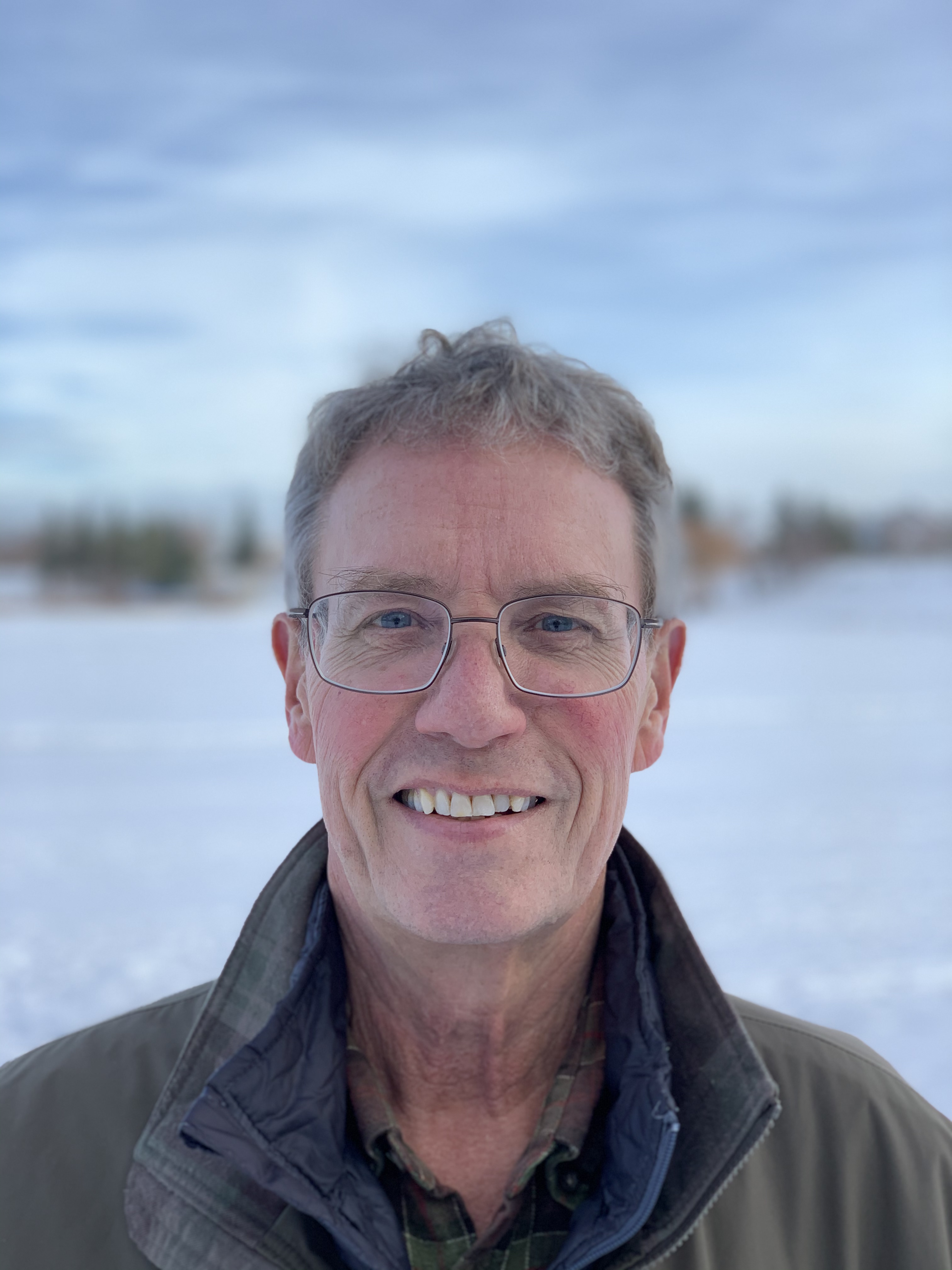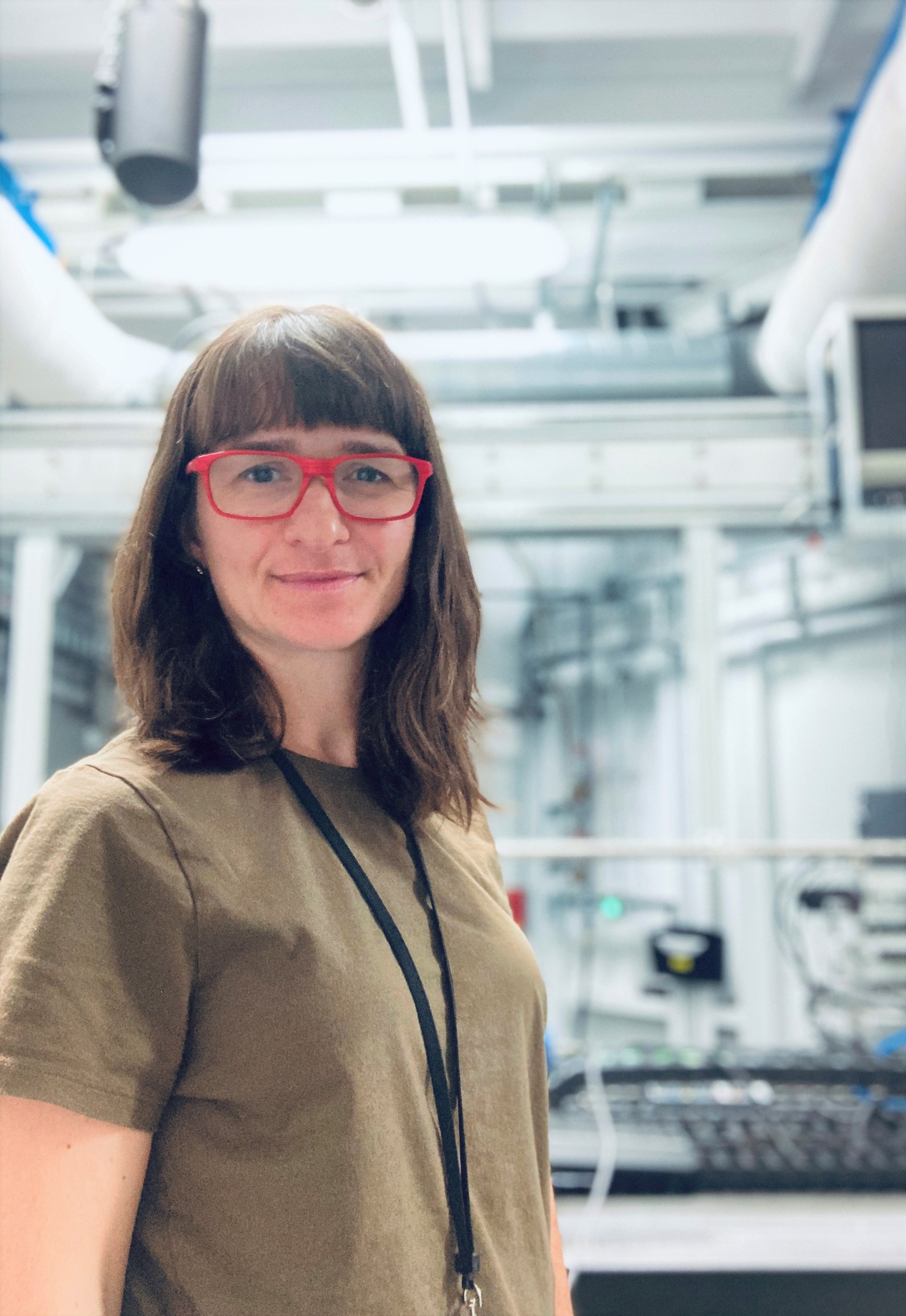Day 1 | Speakers
Joseph Essilfie-Dughan
Geochemist | Orano Canada Inc.
Dr. Joseph Essilfie-Dughan is a GeoChemist with ORANO Canada Inc based in Saskatoon, SK. He received his BSc (Hons) in Chemistry from the University of Cape Coast in Ghana and PhD in Chemistry from University of Saskatchewan. He worked with Jim Hendry’s Group in the Department of Geological Sciences, University of Saskatchewan between 2007 and 2017 initially as Post-doctoral Research Fellow and later as Professional Research Associate. His research interests are in characterization of mine waste (waste rock, tailings and effluent) to determine their long-term geochemical stability and the environmental impact of the potential transport of contaminants from mine waste storage facilities to the receiving environment.
Geochemical Characterization of Uranium Mine Waste in the Athabasca Basin, Canada
Joseph Essilfie-Dughan
Orano Canada, Saskatoon, Saskatchewan
Uranium is a naturally occurring element mainly used as fuel in nuclear power plants to generate electricity. One ton of natural uranium can produce more than 40 million kilowatt-hours of electricity and is equivalent to burning 16,000 tons of coal or 80,000 barrels of oil. Nuclear power is the largest non-hydro source of clean energy worldwide and currently provides 11.5% of global electricity. The Athabasca Basin of northern Saskatchewan and north eastern Alberta, Canada, is a major source of global uranium (U) supply. There are 225 000 tU of known economically mineable U in reserves in the Basin. The mining and milling of U ore result in the generation of waste (waste rock and tailings) which, if not well characterized and disposed of, have the potential to impact the environment. The treated tailings from uranium milling are discharged as oxic slurries to a tailings management facility (TMF). The TMFs in the basin are mainly located in mined-out open pits. These in-pit TMFs are engineered to optimize tailings consolidation and, after decommissioning, minimize groundwater flow through the tailings and ensure the transport constituents of potential concern (COPCs) such as As, Ni, Mo, Se and U is dominated by diffusion.
This talk highlights extensive geochemical characterization of uranium mine and mill tailings studies conducted, using both classical and synchrotron-based analytical techniques, to determine the long-term stability of mineral phases acting as solubility controls on the COPCs in tailings in the TMFs in the Athabasca Basin. The talk also highlights some of the analytical challenges faced by the industry which can potentially be addressed using synchrotron-based analytical techniques.
Estela Reinoso-Maset
Research Scientist | Norwegian Univeristy of Life Sciences (NMBU)
Estela is a researcher at the Centre for Environmental Radioactivity at NMBU in Norway. She graduated in Chemical Sciences majoring in Analytical Chemistry from the University of Vigo (Spain) and obtained her Ph.D. in Environmental Radiochemistry from the University of Plymouth (UK), where she investigated the effect of anthropogenic complexing agents on radionuclide mobility in solid phase systems representative of UK’s low level waste repository in Sellafield. Her first postdoctoral project at the Atomic Energy Commission (CEA, France) focused on developing an ion exchange model to describe U and Ra sorption on clay minerals found at uranium mining sites, such as those managed by ORANO (formerly AREVA) in France, Niger and Kazakhstan. This was followed by a postdoctoral position at the University of California Merced (CA, USA), where she investigated the dissolution of uranyl oxyhydroxide and phosphate minerals in simulated non-static aquifer conditions in the presence of dissolved carbonate as part of a multi-institutional project funded by the U.S. Department of Energy to study the U fate in waste-weathered sediments from the Hanford site (WA, USA). Her current projects at CERAD include the study of radioactive particles and radiocesium distribution in soils and sediments from the Chornobyl and Fukushima exclusion zones, leaching mechanisms of U, Ra, and other toxic elements from alum shale debris originated during road constructions, and U nanoparticle biodistribution in model organisms by synchrotron-based X-ray mapping techniques.
Uranium Fate in Acidic Waste-Weathered Sediments: Scaling of Molecular Processes to Predict Reactive Transport
Estela Reinoso-Maset
Norwegian University of Life Sciences (NMBU), As, Norway
Nuclear fuel reprocessing carried out at the U.S. DOE’s Hanford site (WA, USA) resulted in large volumes of highly acidic process condensates (pH 2 – 3) containing variable U and phosphate concentrations (0 – 3 mM) being discharged into unlined underground, box-like excavations structures called cribs, which caused the liquid waste to percolate into the sandy subsurface sediments. When the liquid waste reaches the vadose zone beneath the cribs, proton promoted dissolution and secondary precipitates of uranyl containing minerals can be expected, with the potential triggering of long-term U immobilization. However, these liquid waste-impacted systems can be under changing conditions, from long-term waste-sediment contact to rapid flow-through conditions where reaction products can be removed by flowing meteoric or ground waters. Therefore, understanding mineral formation, dissolution and transformation in simple systems at a molecular scale is crucial for improving predictions of uranium (U) migration and fate in complex subsurface systems over time. This talk will provide an overview of our investigations on: i) the role of dissolved silica and phosphate in the formation of uranyl minerals in acidic wastewaters and in the long-term weathering of uncontaminated Hanford sediments under static and flow conditions; ii) the impact of the newly formed uranyl phases on U release from the acidic waste-weathered Hanford sediments upon contact with a circumneutral background porewater; and iii) the effect of porewater composition on the dissolution mechanisms and rates of uranyl minerals identified after acidic waste weathering. Throughout this project we applied a range of laboratory- and synchrotron-based analytical techniques in conjunction with geochemical and reactive transport modelling for uncovering molecular level information and reaction mechanisms that ultimately affect the transport of U through subsurface environments.
Sharon Bone
Beamline Scientist | Standford Synchrotron Radiation Lightsource (SSRL)
Sharon Bone is a Beamline Scientist at the Stanford Synchrotron Radiation Lightsource (SSRL) where she applies X-ray based spectromicroscopy tools to environmental problems. She was an Agnew National Security Postdoctoral Fellow at Los Alamos National Laboratory (2017-2018) before joining the staff at SSRL in 2018. Previously, she performed biogeochemical research as a postdoctoral scholar at SSRL (2013-2017). She obtained her Ph.D. in Environmental Science, Policy and Management at the University of California, Berkeley in 2013 as well as a MS in Environmental Engineering (2009). She holds a BA in Chemistry from Vassar College (2005). Her research is aimed at understanding the molecular-scale controls that drive contaminant and nutrient fate in natural and engineered environments, with the goal of improving water quality and securing water resources.
Influence of Organic Matter on Uranium Retention and Mobilization in Contaminated Aquifers
Sharon Bone
Standford Synchrotron Radiation Lightsource (SSRL), Menlo Park, California
Uranium contamination threatens the availability of safe and clean drinking water globally. This toxic element occurs both naturally and as the result of mining and ore-processing in alluvial sediments, where it accumulates as tetravalent U [U(IV)], a form that is less soluble (and assumed to be less mobile) than hexavalent U [U(VI)]. Changing hydrologic and geochemical conditions can cause U to be released into groundwater. Knowledge of the chemical form(s) of U(IV) is essential to understand the release mechanism, yet the relevant U(IV) species are poorly characterized. We sought to understand how U(IV) was stored in alluvial aquifers located in the Western United States, where U contamination occurs as the result of prior ore-processing. Further, we sought to understand the mechanisms that led to its release. To this end, we employed a combination of nano-scale imaging techniques, as well as X-ray absorption spectroscopy to investigate the speciation (in terms of oxidation state, local coordination environment and physical association with different sorbents) of uranium under anoxic, organic-rich, trace-concentration conditions that are relevant to U-contaminated aquifers. In particular, we found that it was necessary to pair nano-secondary ion mass spectrometry (NanoSIMS; conducted at EMSL) with scanning transmission X-ray microscopy (STXM; conducted at the Canadian Light Source). NanoSIMS was used to detect the distribution of U at low concentrations of uranium (<100 ppm), while STXM was used to assess the distribution of organic carbon species. By imaging the same regions, we were able to show unequivocally that organic carbon was a particularly good sorbent for uranium, and that uranium sorbed to numerous organic matter types, both plant- and microbial-based. We argue that organic matter in sediments is key to controlling the U distribution in sediments and its mobilization into groundwater by (1) contributing to the creation and maintenance of reducing conditions that favor stabilization of U(IV) relative to U(VI) and (2) acting as a strong sorbent for U(IV). Finally, we suggest that organic matter may act as a colloidal vector, mobilizing U(IV) directly.
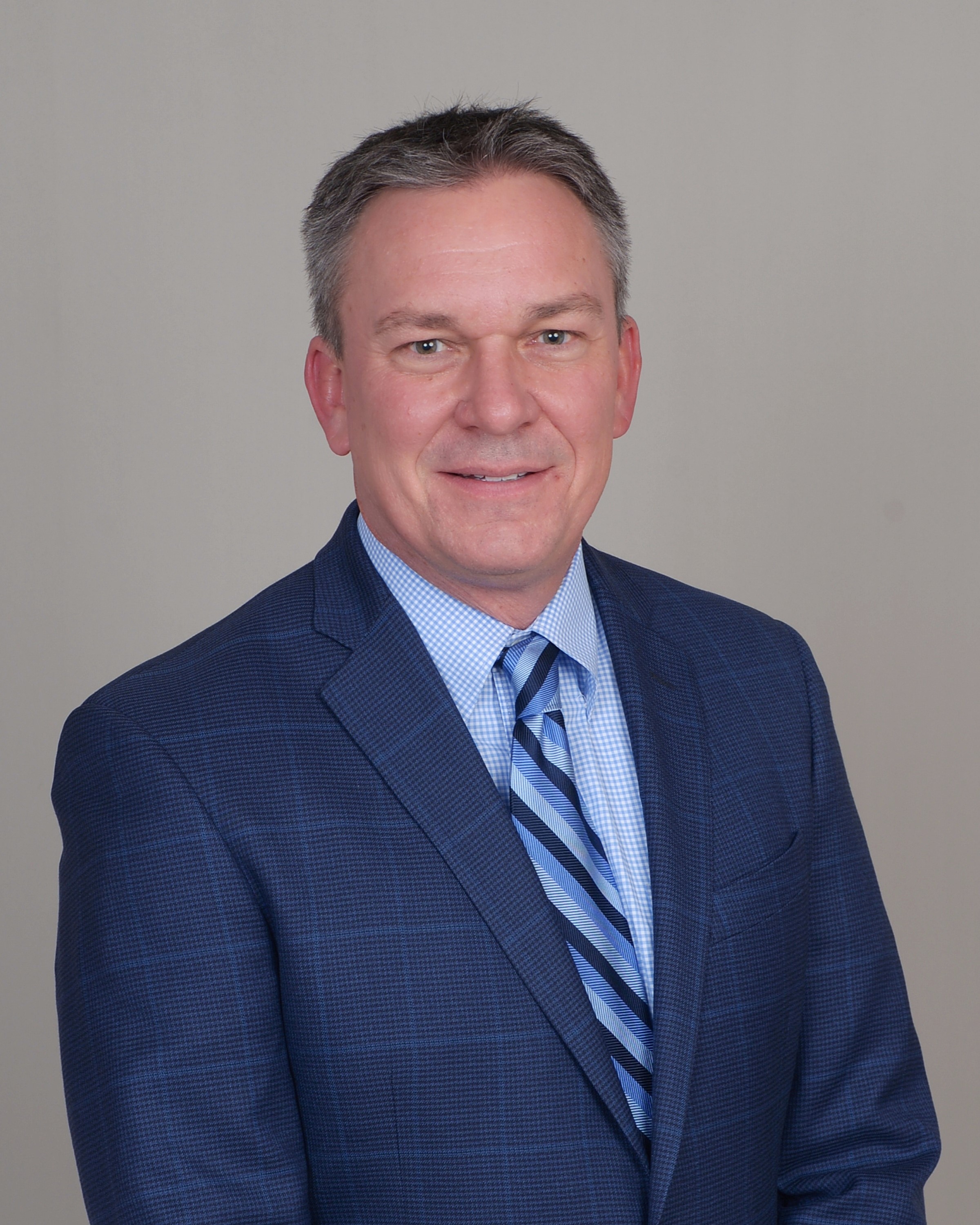
Jeff Gillow
Principal Geochemist | Jacobs Engineering Group
Dr. Jeff Gillow is a Principal Geochemist with Jacobs Engineering Group and is based in Denver, Colorado. He holds a Ph.D. in Environmental Science and Engineering from the Colorado School of Mines. He has 33 years been involved in research and development of innovative technologies for remediation of metals and radionuclides in soil and groundwater systems including bioremediation and in-situ treatment using chemical amendments for mining, industry, and energy companies. Throughout his career he has worked to integrate the use of advanced analytical tools in his work, including the application of synchrotron methods. Jeff believes that the scientific community should contribute to helping solve our most difficult problems related to environmental quality and that technologists should work to put into practical use the cutting-edge tools available to us to unravel the extreme complexity of environmental systems, in order to engineer better, sustainable solutions.
Treatment of Uranium in Groundwater: Advanced Analytical Approaches to Support Technology Development and Use
Jeff Gillow
Jacobs, Denver, Colorado
With the transition to new forms of energy, and enhanced emphasis on mining metals, rare earth elements, and development of new, smaller and modular nuclear reactors, the need is more urgent than ever to address the mobility of radionuclides in the environment, remediate past impacts, and work to protect water sources going forward. Uranium is one of the most challenging constituents in groundwater to treat, due to it’s propensity to form highly soluble uranium carbonate complexes, rendering it stable in the dissolved phase and resistant to natural attenuation and sorption processes. For over 40 years environmental scientists have been seeking to understand the fundamental environmental chemistry of uranium and in turn, develop engineering solutions to limit its transport in groundwater systems. Synchrotron science and methods have played a pivotal role in unraveling the complexity of uranium in the environment. Technology has developed for the use of soluble phosphate, and phosphate minerals, for in-situ treatment of groundwater, eliminating the need for “pump-and-treat” systems that are often ineffective and consume significant quantities of water. This presentation provides an overview of recent developments of engineered solutions to address uranium mobility in groundwater, and the critical role of advanced analytical approaches, including synchrotron methods, to verifying the technology and gaining its acceptance by stakeholders.
Matt Lindsay
Associate Professor | University of Saskatchewan
Dr. Lindsay is an Associate Professor in the Department of Geological Sciences at the University of Saskatchewan and the NSERC/Syncrude Industrial Research Chair in Mine Closure Geochemistry. His research examines geochemical aspects of mine waste characterization, management, and reclamation and has focused on active and inactive mines in North America, South America, and Europe. This research has emphasized northern regions and covered various commodities including base metals, precious metals, bitumen, and diamonds.
Metal-Mineral Interactions in Mining Environments
Matt Lindsay
University of Saskatchewan, Saskatoon, Saskatchewan
Metal contamination is a principal environmental concern at both active and inactive mining operations globally. Effective mitigation depends upon thorough understanding of processes driving metal release, transport, and attenuation in mining environments. Metal-mineral interactions often control metal mobility in waste deposits and in mining-impacted soils, sediments, and associated waters. These interactions are often dependent on geochemical conditions, which are spatially and temporally variable and influenced by many factors including operational decisions and environmental change. Synchrotron techniques can provide valuable insight into metal-mineral interactions and both intended and unintended outcomes of management and reclamation strategies. This talk will highlight some recent studies from my research group that has used synchrotron-based X-ray absorption spectroscopy, X-ray fluorescence imaging, and X-ray diffraction to examine metal-mineral interactions in metal and oil sands mining environments.
Remediation of Legacy Uranium Mines and Mills in Northern Saskatchewan
David Sanscartier
SRC, Saskatoon, Saskatchewan
The Saskatchewan Research Council (SRC) manages the remediation of Gunnar Mine and Mill, Lorado Mill and 35 legacy uranium mines and exploration sites on crown land in northern Saskatchewan on behalf of the Saskatchewan Ministry of Energy and Resources. The objectives of the project are to make the sites safe and stable over the long-term, to allow their traditional use, and to ultimately transfer them to the provincial Institutional Control Program. This presentation will give an overview of the project, its status, and share lessons learned.
Heather Jamieson
Professor | Queen's University
Heather Jamieson is a Professor of Geological Sciences and Geological Engineering at Queen’s University, Kingston, Canada. Her expertise is in environmental geochemistry, particularly the mineralogical controls on the mobility of metals and metalloids in mine waste. She has pioneered the application of automated mineralogy and synchrotron-based microanalysis to metal speciation in mine tailings, soils and sediments. Much of her research has focused on arsenic associated with gold mine waste in Yellowknife and Nova Scotia, and her recent focus is on the environmental mobility of critical metals. Dr. Jamieson was awarded the 2017 Peacock Medal from the Mineralogical Association of Canada which is given to a scientist who has made outstanding contributions to the mineral sciences in Canada. She was the 2018 Adrian Smith Lecturer at the University of Waterloo. In 2019, she was awarded the Rick Hutson Memorial Award for Mentorship from Women in Mining at the Prospectors and Developers Association of Canada Annual Meeting.
Using mineralogical characterization to solve multiple environmental problems at Giant Mine, Yellowknife, Northwest Territories
Heather Jamieson
Queen's University, Kent, Ontario
Twenty years of using multiple methods, including synchrotron microanalysis, to characterize soils, sediments, mine tailings and dust from a large, complex contaminated site has shown that research results can be translated to practical solutions for industry, government and communities. Identifying solid phases that host potentially hazardous elements improves risk assessment and remediation design, leading to more effective and affordable environmental management strategies for contaminated sites.
Giant Mine was a large gold mine which operated from 1950 to 1999 and left a complex legacy of mine tailings and contaminated lake sediments and soils. Ore roasting transformed arsenopyrite (FeAsS), in which the gold was microscopically incorporated into maghemite and hematite (both Fe2O3) and arsenic trioxide (As2O3). During the early years of production, when there were few pollution controls, approximately 20,000 tonnes of arsenic trioxide was released from stack emissions to the surrounding environment. The site is managed by the federal government, and remediation costs are expected to be more than one billion dollars.
Our research showed that an important host for arsenic in the tailings at Giant is the roaster-generated iron oxide phases (maghemite and hematite). This differs from the previous-held view that all the arsenic in the tailings was sulphide-hosted. The maghemite contains several weight per cent of both As(III) and As(V) in ratios that are consistent for long-exposed tailings and recently deposited, indicated stable sequestration of both species. Investigation of the near-surface soils has revealed the persistence of arsenic trioxide from stack emissions, which had been overlooked in the original remediation plan. This contamination is present up to 30 km from the former roaster. We have published a new value for the natural background of arsenic in soils in the Yellowknife region which is an order of magnitude less than the current one used for remediation plans. Arsenic trioxide has also been recognized in lake sediments where post-depositional biogeochemical processes have partially transformed it to arsenic sulphide. We have identified the primary arsenic host in windblown dust has been identified as roaster-generated iron oxide, and fortunately arsenic trioxide is not present.
David Singer
Associate Professor | Kent State University
Dr. Singer received his B.S. in Geological Sciences from the University of Michigan and Ph.D. in Geological and Environmental Science from Stanford University, followed by a joint post-doctoral position in the Earth and Planetary Sciences Department at University of California, Berkeley and the Earth Sciences Division of Lawrence Berkeley National Laboratory. Dr. Singer joined the Kent State University faculty in 2012 in the Department of Earth Sciences. His research and teaching interests are in the areas of environmental mineralogy and geochemistry, and current projects related to the fate and transport of toxic metals in the environment are focused on areas impacted by historic coal mining in Appalachian Ohio, and lead (Pb) and other metals in urban soils in northeast Ohio.
The complexity, challenges, and remediation needs of environments impacted by historic coal mining.
David Singer
Kent State University, Kent, Ohio
Water resources across Appalachia and the U.S. are degraded by contamination from legacy coal mining operations, primarily as a result of acid mine drainage (AMD) and contaminant leaching from abandoned mine spoil, which have severe, long lasting impacts on water quality and stream ecology in affected watersheds. The Kent State University Environmental Mineralogy and Geochemistry Group’s research draws from mineralogy and (bio)geochemistry and intersects with hydro(geo)logy to produce a more unified understanding of contaminant transport through complex material across a wide range of spatial regimes. Recent work within a watershed impaired by historic coal mining in Appalachian Ohio has focused on contaminant transport dynamics within streams and soils developing on abandoned mine spoil. In the context of streams, we have shown that: (1) mineralogical and geochemical variation in stream sediments impacted by acid mine drainage is related to hydro-geomorphic setting; AMD deposit speciation and distribution, and pore water chemistry, are not spatially uniform within stream reaches, as a result of groundwater-stream exchange-facilitated interactions in the presence of AMD-derived materials; (2) Seasonal mixing from intermittent flows also drive concentration-discharge behavior, which can aid in predicting both downstream transport and effects on aquatic life under variable flow. Contaminant metals derived from acid mine drainage (AMD) are transported through stream networks in aqueous, colloidal, and/or particulate phases; however, hydrogeochemical processes that regulate export of these phases from headwater catchments are not fully resolved; and (3) colloid formation and mobility respond to geochemical gradients, with implications for how sediment–water interactions influence metal transport through streams. In the context of soils developing on abandoned mine spoil, we have shown that: (1) micrometer-scale metal(loid) distribution within Fe sulfides controls metal(loid) release into solution during weathering of remnant coal shale, and that non-concomitant contaminant release indicates that an understanding of the textural relationships in the source material is required to understand weathering trends; (2) The persistence of the micrometer-scale pyrite grains in these soils is likely the result of the formation of the secondary mineral surface coatings which can limit complete oxidative dissolution, and these phases also play a role in re-sequestration of metal(loid)s release from sulfide mineral weathering; (3) Physical weathering of pyrite in the mine spoil can generate colloidal pyrite, which is mobilized and transported by soil pore water, and these particles are associated with toxic trace metals including Cu, Mn, and Zn; (4) The presence of abundant residual coal and Fe- and Mn- (oxy)hydroxides in mine spoil-derived soils control and mitigate trace metal (Cu, Ni, and Zn) transport from the soils, and that while Mn was highly mobile in Mn-enriched soils, Fe and Al mobility may be more controlled by dissolved organic carbon dynamics than mineral abundance; and (5) Vegetation can accumulate Mn and mitigate its leaching from shallow soils, potentially also decreasing Mn leaching from deeper soils by reducing infiltration, whereas vegetation had less impact on Fe mobility, which was retained as Fe oxides following oxidative weathering. On-going works aims to develop a framework for a more cost-effective and targeted approach for future AMD treatment which includes: (1) Determining which variables are the most reliable predictors of AMD reclamation project success, and (2) Determining the rate at which AMD production is slowing and the time frame for oxidative exhaustion.
Day 2 | Technical Session Speakers
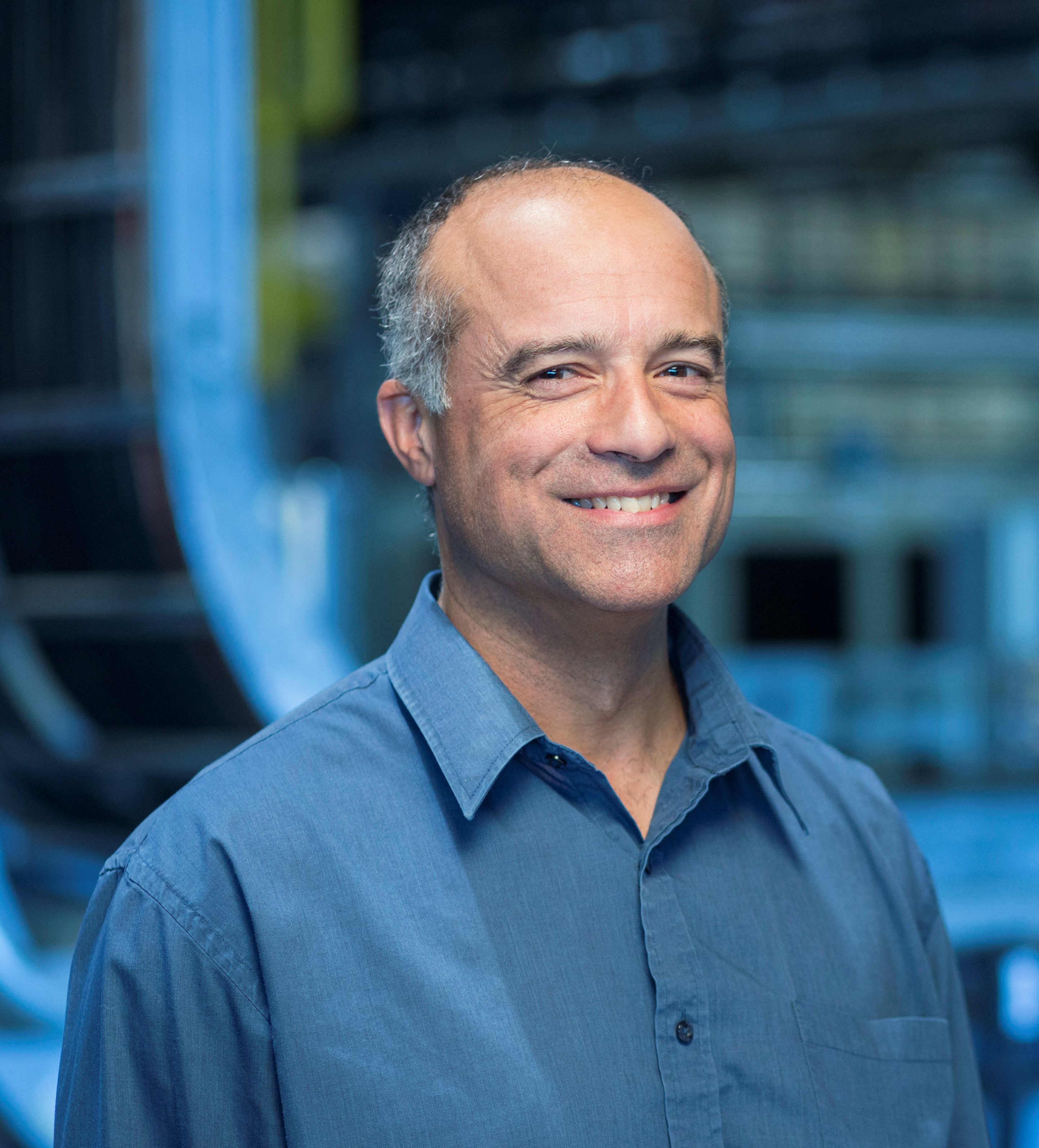
Jeff Warner
Industry Services Manager | Canadian Light Source
Dr. Jeff Warner manages the Industrial Science group at the Canadian Light Source (CLS) and is an Adjunct Professor in the Department of Geological Sciences at the University of Saskatchewan. Dr. Warner has a B.Sc. and M.Sc. in Chemistry from Carleton University in Ottawa, Canada and obtained his Ph.D. from the University of California, Davis. His interest and experience in synchrotron science was cultivated from post-doctoral work at the Lawrence Berkeley National Laboratory in Berkeley, California and working in the Department of Geological and Environmental Sciences at Stanford University. His area of expertise involves using spectroscopy to understand the chemical and biological processes occurring at environmental interfaces and how these processes affect pollutant speciation and toxicity.
Joel Reid
Industry Services Senior Scientist | Canadian Light Source
Joel Reid is a Senior Industrial Scientist at the CLS, specializing in powder diffraction for the Industry Services group. Prior to joining the CLS in 2011, Joel held a position as Senior Scientific Editor at the International Centre for Diffraction Data. An engineering physicist by training, he completed his undergraduate and PhD in engineering physics at Queen’s University. His work with clients often involves identification and quantification of multifaced mixtures and the solving of new structures. When he is not at the CLS, Joel can be found spending lots of quality time with family, playing hockey and cycling. He contributes to the community of Saskatoon through his volunteer role as the Chair of a refugee organization.
Ning Chen
Senior Beamline Scientist (HXMA Beamline) | Canadian Light Source
Dr. Ning Chen obtained his Ph.D. in 2002 at the Department of Geological Sciences, University of Saskatchewan, and worked as postdoctoral fellow at Canadian Light Source (CLS) between 2001-2003 before becoming a staff scientist there. Currently he is a senior staff scientist and the designated beamline responsible for the Hard X-Ray MicroAnalysis beamline (HXMA) at CLS. He involved in design, construction, and commissioned HXMA at CLS, is now responsible for the beamline operation and user program. Ning is committed to making every effort to develop HXMA, the first hard X-ray XAS facility in Canada, as a leading center in synchrotron XAS research, developing user community at his beamline, and promoting XAS both in Canada and internationally. A hypothesis driven and theoretical modeling guided XAFS roadmap has been developed at HXMA and promoted throughout HXMA XAS user community, helping users' XAFS projects effectively and efficiently performed at BL. Ning's expertise is X-ray absorption spectroscopy and its application in material and environmental studies.
Day 3 | Speakers
Alan Martin
Principal, Senior Scientist | Lorax Environmental Services
Alan is an environmental scientist with 30 years of international experience in mine-related environmental studies. With a background in biogeochemistry, mine waste management, and water quality, Alan’s work has focused on the characterization and management of mine-influenced systems. In his capacity as a senior scientist, Alan has served as a senior reviewer and technical advisor on numerous mining-related projects, and has authored over 100 papers on mine-related studies.
The Assessment of Selenium in Mine-Influenced Environments
Alan Martin
Lorax Environmental Services, Vancouver, British Columbia
The environmental assessment and management of selenium (Se) has gained increasing importance in the last few decades owing to observations of Se-induced toxicity in some freshwater environments. Enhanced loadings of Se to aquatic systems can occur due to mining in association with the weathering of Se-bearing mining wastes (e.g., waste rock). Once in the aquatic environment, Se toxicity can occur through food-chain transfer, where toxicity to egg-laying vertebrates (e.g., fish, aquatic birds and amphibians) is manifested as abnormalities in developing embryos and/or embryo mortality. The biological uptake of dissolved Se by primary producers (e.g., algae and bacteria) represents the dominant variable governing the potential for Se accumulation at higher trophic levels (e.g, fish and birds). In turn, the potential for Se uptake into primary producers is strongly dependent on the aqueous speciation of Se, with reduced forms of Se such as dissolved organo-Se and selenite (SeIV) being considerably more bioavailable than their oxidized counterpart, selenate (SeVI). The passive attenuation and active treatment of Se are also strongly dependent on Se speciation, whereby Se removal from solution relies on the presence of suboxic conditions and immobilization of reduced forms (e.g., elemental Se). Overall, an understanding of Se in mine-influenced settings, and associated management plan development, requires consideration to several disciplines, including geology (Se sources), water-rock interaction (Se release), hydrology (surface flow paths), hydrogeology (groundwater flow paths) and ecotoxicology (food chain transfer).
Clare Miller
Assistant Professor | University of Tasmania
Clare Miller is an assistant professor at the University of Tasmania and leads the Environmental Geochemistry Research Group in the Centre of Ore Deposits and Earth Sciences (CODES). Her research focuses on using a multidisciplinary approach to understand the drivers and controls on metal(loid) mobility in mine wastes and environmental systems (i.e., water, sediment, soil). Through field-based sampling and microanalytical laboratory techniques, Clare’s research aims to (1) inform remediation activities at past, present and future legacy mines sites; (2) develop innovative strategies to mitigate the impacts of mining on environmental and community health; (3) understanding the impacts of climate change on mining activities, metal mobility, and baseline geochemical conditions.
As an environmental geochemist, Clare’s early career and research has focused on understanding dynamic environmental systems to support the responsible development of natural resources, both in Canada and Australia. She completed her PhD in Dr Heather Jamieson’s research group at Queen’s University and has 10 years of experience as an environmental geochemist, working in industry, federal government, and academic research.
Arsenic Mobility in a Changing Northern Climate: Insitghts from Multidisciplinary, Grain-Scale Characterisation of Mining-Impacted Sediments
Clare Miller
University of Tasmania, Hobart, Tasmania
Climate change is influencing the biogeochemical dynamics of lake systems in northern Canada. These changes may affect the loading and cycling of naturally occurring metal(loid)s and the long-term stability of mining-derived contaminants in sub-Arctic lakes. As climate warming continues to impact sensitive sub-Arctic and Arctic ecosystems, an improved understanding of the effects of increasing organic matter (OM) on both the mineralogical and biological processes that regulate the mobility of arsenic (As) in mining-impacted, freshwater aquatic systems is necessary to inform the monitoring and remediation of these environments. Through combined microscale geochemical (SEM-based automated mineralogy, EPMA, synchrotron-based μ-XRF/XRD and XANES) and organic speciation techniques (Rock Eval, fluorescence microscopy) recent research investigating grain-scale associations between As and sediment OM provides new insight to the mechanisms of control on As mobility at the sediment water interface.
This talk will highlight research conducted on lakes proximal to two high-grade, low-tonnage historical orogenic gold (Au) mines in the Courageous Lake Greenstone Belt, Tundra Mine (1964–1968) and Salmita Mine (1983–1987), Northwest Territories. Temperatures for the region are predicted to continue rising at more than double the global rate, and to increase by 2 to 6°C by the late 21st century. The location, both geologically and geographically, means the Tundra Mine site provides an ideal location to study the impacts of current climate warming on metal(loid) mobility in both mining-impacted and natural environments.
Our research demonstrates that accumulation of OM in near-surface sediments plays an integral role in the cycling of As at the sediment–water interface (SWI). Detailed characterization of sediment at and below the SWI suggests that both terrestrial and algal (benthic and planktonic) OM play important roles in stabilizing redox-sensitive authigenic minerals and associated As. Under dynamic redox conditions increased algal and terrestrially derived OM will mediate the flux of As to overlying surface water by: (1) facilitating the precipitation of authigenic sulfides, (2) enhancing the stability of authigenic oxides, and/or (3) allowing for the direct sequestration of As to OM. These findings highlight the need for natural, climate driven biogeochemical processes to be considered within monitoring programs aiming to delineate potential mining impacts. While combining organic petrography techniques with geochemical and mineralogical speciation methods revealed novel observations, this talk will emphasize the need to optimise this workflow to further our knowledge of mechanisms between As and OM.
Graham George
Professor and Canada Research Chair | University of Saskatchewan
Graham George is the Canada Research Chair in X-ray Absorption Spectroscopy at the University of Saskatchewan. He has been conducting research using synchrotron light for almost 4 decades and has published more than 300 papers in primary peer-reviewed literature using synchrotron techniques. His interests include a range of applications of X-ray spectroscopy to address chemical problems in the environmental and life sciences.
Speciation of Complex Samples using Advanced X-ray Spectroscopy
Graham George
University of Saskatchewan, Saskatoon, Saskatchewan
X-ray absorption spectroscopy (XAS) can provide details of the local physical structure and electronic structure of many elements in a wide variety of samples. One unique advantage of XAS is that it can be used to probe chemistry in situ in a range of systems with little or no pre-treatment. Despite its success, applications of the method can be limited by spectroscopic lifetime broadening, giving poor energy resolution, and by lack of access to low concentrations. Recent progress in advanced spectroscopy can overcome both of these limitations, with adequate spectra from concentrations as low as 100 nM. The advantages and limitations of advanced X-ray spectroscopic methods will be discussed, with examples of applications taken from the authors’ current research.
Toby Bond
Industrial Scientist | Canadian Light Source
Toby is a graduate of the U of S Chemistry department (B.Sc. Hon.) and Dalhousie University (M.Sc.). He's currently a scientist in the Industrial Services Group at the Canadian Light Source, where he specializes in synchrotron x-ray imaging projects for private-sector clients of the facility.
Advanced 3D X-Ray Imaging of Geological Microstructure
Toby Bond
Canadian Light Source, Saskatoon, Saskatchewan
X-ray imaging is a powerful tool that can be used to address a number of geological and geotechnical problems. 3D x-ray techniques such as computed tomography (CT) have proven especially useful for mapping the microstructure of core samples. For such applications, high spatial resolution and image contrast is often required to accurately capture the porosity, grain structure, elemental distribution, and minerology of a sample. Synchrotron x-ray imaging is uniquely suited to this kind of application, and also allows for extended imaging techniques (like 3D elemental mapping) that are not possible with conventional x-ray imaging tools. This talk will explore examples of how this kind of imaging has been used at the CLS to solve practical, applied problems with geological materials.
Viorica (Ibi) Bondici
Associate Scientist (BioXAS-Imaging) | Canadian Light Source
She obtained her Biochemistry degree (B.Sc. high Hon) and Ph.D. in Applied Environmental Microbiology from the University of Saskatchewan. She did her post-doctoral training in environmental studies employing synchrotron techniques under Dr. Joyce McBeth’s supervision. She is currently the associate scientist for the BioXAS-Imaging beamline at the Canadian Light Source.
Unique Capabilities of the BioXAS-Imaging Beamline
Viorica (Ibi) Bondici
Canadian Light Source, Saskatoon, Saskatchewan
The BioXAS-Imaging beamline stands out among other synchrotron beamlines because of its capability to operate in multiple resolution modes with a high level of performance. This presentation will cover the resolution modes currently available for users and the technical aspects of the end station layout, which may serve as an informational tool for sample feasibility and data collection planning. Furthermore, environmental/geochemical relevant data sets, which users kindly provided, will also be presented to showcase the beamline capabilities.
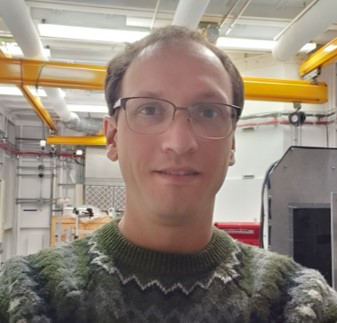
Graham King
Scientist (BXDS) | Canadian Light Source
Graham King received his B.S. in Chemistry from SUNY Buffalo in 2005 and his PhD in inorganic solid state chemistry from The Ohio State University in 2010 under the guidance of Patrick Woodward. He then spent 6 years at the Lujan Neutron Scattering Center at Los Alamos National Lab, first as a postdoc and then as a staff scientist. After briefly working as an independent consultant he came to CLS in 2018 as an instrument scientist for the Brockhouse Beamlines. He specializes in advanced powder diffraction methods for determination of the crystal and local structures of materials, with a special interest in cation ordered perovskites.
Utility of Synchrotron Powder Diffraction and Pair Distribution Function Analysis in Environmental Science
Graham King
Canadian Light Source, Saskatoon, Saskatchewan
Powder diffraction using a synchrotron source provides many unique opportunities for the characterization of environmental samples. The exceptionally sharp peaks and flat backgrounds allow for the detection and quantification of small amounts of a phase in a mixture. High energy X-ray diffraction can also be used to penetrate thick samples or avoid problems of absorption when heavy elements are present. Access to high energy X-rays with large flux also allows for the production of Pair Distribution Functions (PDFs) from synchrotron powder diffraction data. A PDF provides the distribution of inter-atomic distances in a material and is a powerful probe of the short and medium-range structure. This provides a method to structurally characterize poorly crystalline or non-crystalline materials. An overview of the PDF technique will be given along with an example of its use to structurally characterize the arsenic containing minerals arseniosiderite and yukonite.


